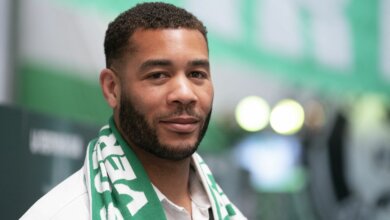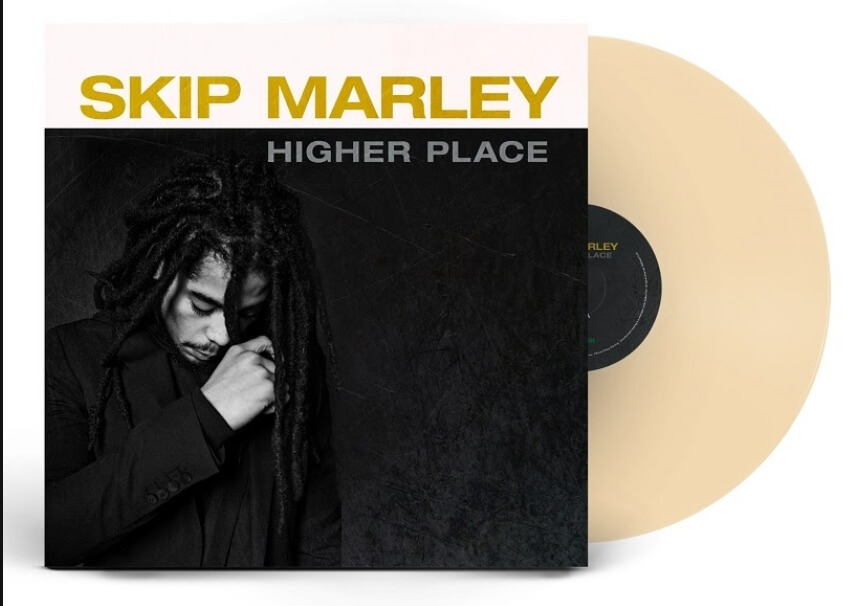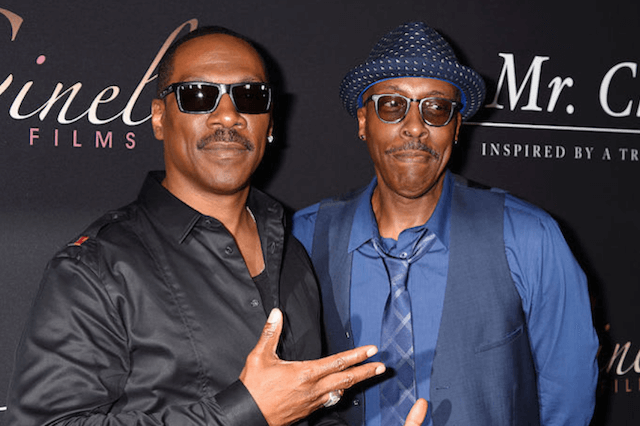Ruth E. Carter on modernizing the ‘Coming 2 America’ costumes: ‘This is our vision of royalty’

In the late ’80s, Ruth E. Carter was designing costumes for Spike Lee’s “Do the Right Thing” when a high-profile visitor showed up to the now-iconic film’s Brooklyn set. It was comedian Eddie Murphy.
“He was already a big movie star, an icon,” Carter recalls. “And we were like, ‘Wow, that’s Eddie Murphy. He just did that funny film, “Coming to America.” ’ ”
Fast forward some three decades later, and Carter has lent her talents to “Coming 2 America,” the sequel of the movie that introduced Murphy as Prince Akeem, heir to the throne of the fictional African kingdom of Zamunda, who travels to New York to scout for a royal spouse in the aptly titled borough of Queens.

It’s the latest collaboration between Murphy and Carter, who won a historic Oscar for her work on “Black Panther,” which introduced a very different African kingdom (Wakanda Forever) and its royal family. Carter also served as the costume designer on “Dolemite Is My Name,” the 2019 Netflix comedy that marked a comeback of sorts for Murphy and was helmed by “Coming 2 America” director Craig Brewer.AD
On the heels of “Coming 2 America’s” release on Amazon Prime, Carter talked to The Washington Post about revisiting the fashion from the first film — which featured the work of costume designer Deborah Nadoolman Landis — and moving the Zamundan aesthetic 30 years forward.
(This interview has been edited for length and clarity.)
Q: What was your starting point in thinking about the costumes for “Coming 2 America”?
A: My starting point was to look at the first film again. I can say that I’ve looked at “Coming to America” to just sit back and laugh and enjoy it. But I wanted to look at “Coming to America” this time as a costume designer, and really look at the magic behind the costumes and look at the magic behind the journey.
I took some notes and I saw that there were some great things that I remembered so well — the big iconic wedding dress and the lion on the shoulder, all the things that people loved and they continue to dress up in. Even going to see “Black Panther,”people were dressing up as “Coming to America” [characters]. And so I said, “This is our vision of royalty.” We need to embrace that. Because any time it’s aspirational and it makes us feel good, we need to keep it and hold on to it.AD
But also, it’s 30 years later. So, how do we move this idea forward? How do we show royalty and its real, true form in Africa?
I also wanted there to be some representation there, so Africans who looked at “Coming 2 America” could see that this was South Africa and this was East Africa and that was West Africa.
Q: You’ve talked about doing mood boards for the films that you work on. What was on your mood board for this film?
A: One of my favorite images is of an African tribe that had these amazing sculptural haircuts. One would be soaring up in the air and in another part would be a crescent shape around the back. And I made hats to represent that shape and I called them my hair hats.
I looked at a lot of African fashion; I had designers on my boards. I had Lavie by CK, I had Leduma [Ngxokolo of Maxhosa], I have Palesa [Mokubung of Mantsho]. I had so many African designers, and I wanted to really immerse myself in a modern Africa. What were those designers producing? So those were on my mood boards and also ways in which we could show royalty. There were lots of crowns, there were scepters, there were ancient kings, there were ancient queens.AD
Q: Did you do any travel or specific research for the film?
A: I traveled through my library. I have a library of African books on tribes and all kinds of things. And even on “Black Panther,” I didn’t actually go to Africa until after I finished, and because I had done so much research on the continent, I was like, “Time to go!”
It’s a vast continent, so if I were actually going and doing research on all of those tribes we were inspired by, I’d still be there researching.I know, even from my trip, that it’s a very modern place and that there is a lot of cultural traditions that are preserved. And, you know, it does have a lot of representation. I wanted to design a Zamunda that embraced a lot of cultures, too: East India as well as Africa.In the sequel to the 1988 film, newly crowned King Akeem (Eddie Murphy) returns to New York more than three decades later to find his long-lost son. (Amazon Prime Video)
Q: Jermaine Fowler’s character, Lavelle, doesn’t even know he’s a Zamundan prince when we first meet him. How did you communicate that transition through his clothing?AD
A: It was a slow transition for this character.He starts out in just the plaid shirt and some drop-crotch jeans and Timberlands. And we wanted him to have a real New York spirit about him. We had to make some fun transitions from him going to applying for a job — we had a clip-on tie we gave him — and then to scalping tickets. And then he meets his father, who is Eddie Murphy’s character, Akeem, and goes to Zamunda and still he’s not sure what’s happening. They’re calling him a prince. They’re trying to give him a princely braid.
He’s given clothes little by little, and he’s very uncomfortable. He’s not really understanding his role quite yet until Nomzamo [Mbatha, who plays Nirembe] says, “Be your own king.” That’s when we decided that we would mix a little bit of Queens with Zamunda for his style. There were a couple of moments where we wanted it to be awkward, where he’s completely in Zamundan style. And then we finally take the athletic wear and we cut it up and we added fringe and we did beaded tennis shoes.
He comes into his own. His crown is uniquely his, and his look is uniquely his. He finally gets his swagger. So that was a fun journey to take on.
Q: There are also a lot of very strong women in the movie, especially Akeem and Lisa’s eldest daughter, Mika (KiKi Layne). How did you represent that strength?AD
A: Well, we wanted to show [Mika] from the start that she deserved to be the queen of Zamunda and she deserved to rule. And so we gave her an outfit in the opening sparring scene where they’re practicing their martial arts. We gave her a costume that was made up of the Zamundan flag, and she was a proud wearer of the flag.
There were several athletic looks that she had, similar to that [scene] when she goes to the plain where the lion is, and she’s in her green and white Puma outfit. And we love the fact that she could be ready for battle at any time and then also be ready for court and still be the princess that she is. We wanted to show a new style of formalwear. We shortened the skirt and still gave it a train. We put it on one shoulder — one shoulder was out, one shoulder was in. We just tried to be innovative with her.
Our goal with her was to tell her story as a beautiful woman who could be queen — or could be king, I like to say.AD
Q: For the sparring scenes, were there any sort of adjustments that you made or different fabrics that you used for movability?
A:We had to use a lot of jersey so that they could actually work in it. I wanted the fabric to have movement.
I incorporated sashes and flags and full-skirted dresses so that they would have their own ballet kind of movements. And then the youngest daughter comes out and she’s just this wiry little girl mishmosh of Kente colors. So it was fun to play with all of the levels of fabrics and what they could do.
Q: We talked about Lavelle’s transition. Leslie Jones, who plays his mother, also goes from Queens to Zamunda. Can you talk a little bit about how you approached her fashion?
A:Well, it was fun because she arrives in Zamunda with no suitcases. They just leave and go. [Viewers] hear her say, “Yeah, Queen [Lisa], I just borrowed this from you, I had to make some alterations.” And it was nice to see her in this, like, quintessential Zamundan style — the big Ankara dress with the big headdress. And then we also customized it for Leslie Jones: We added a little fringe to the hat, and we made it a little extra. That was a lot of fun.AD
And I was really happy that she liked it because sometimes you can put funny people in funny costumes and it’s too much. But actually, I really liked that dress and I liked that headdress. She could almost wear that anywhere. She could wear that right now. It was fun to watch her enjoy herself.
Credit: www.washingtonpost.com
Christopher Sam is a savvy web designer and developer with advanced knowledge in Search Engine Optimization. The certified Google Trainer is also a trusty contributor to this website.




